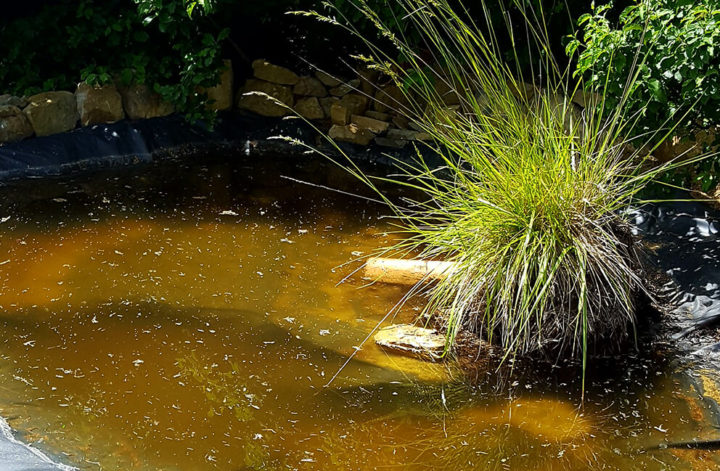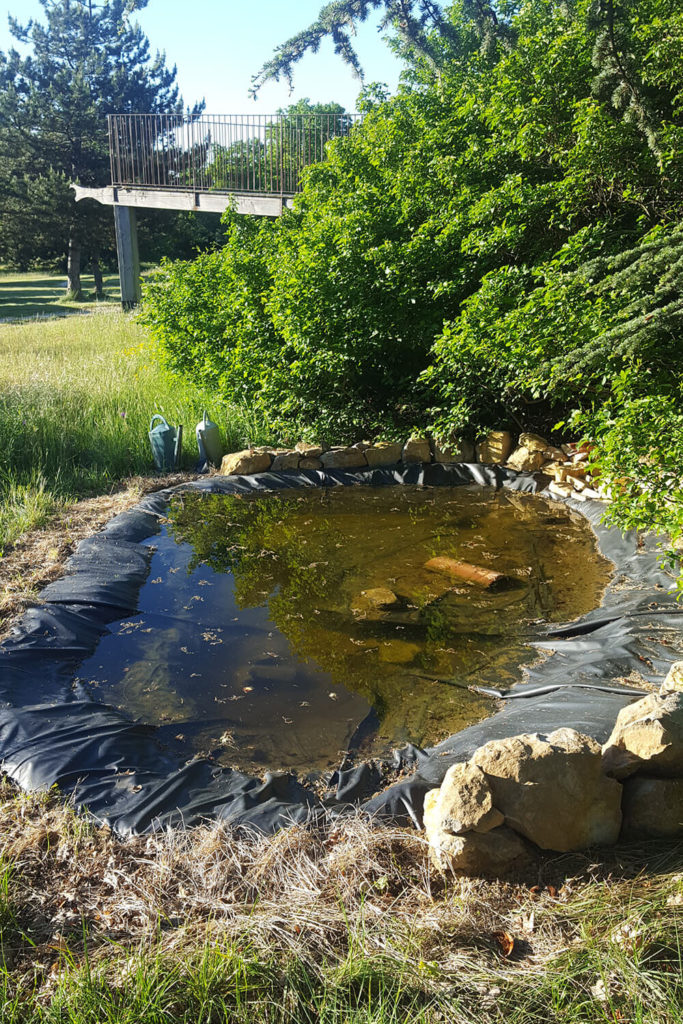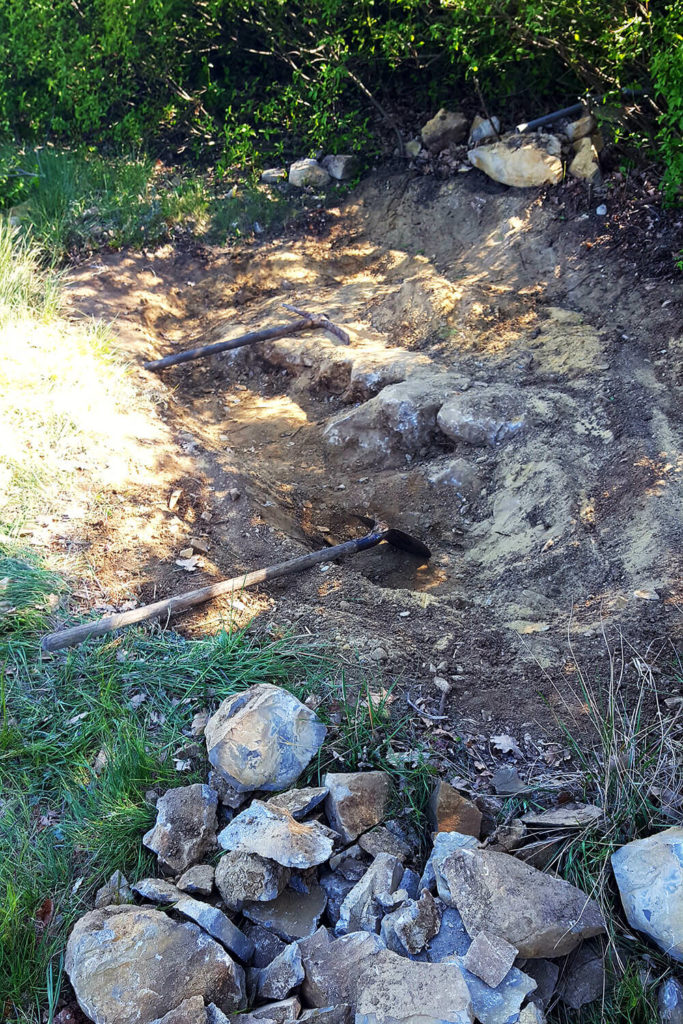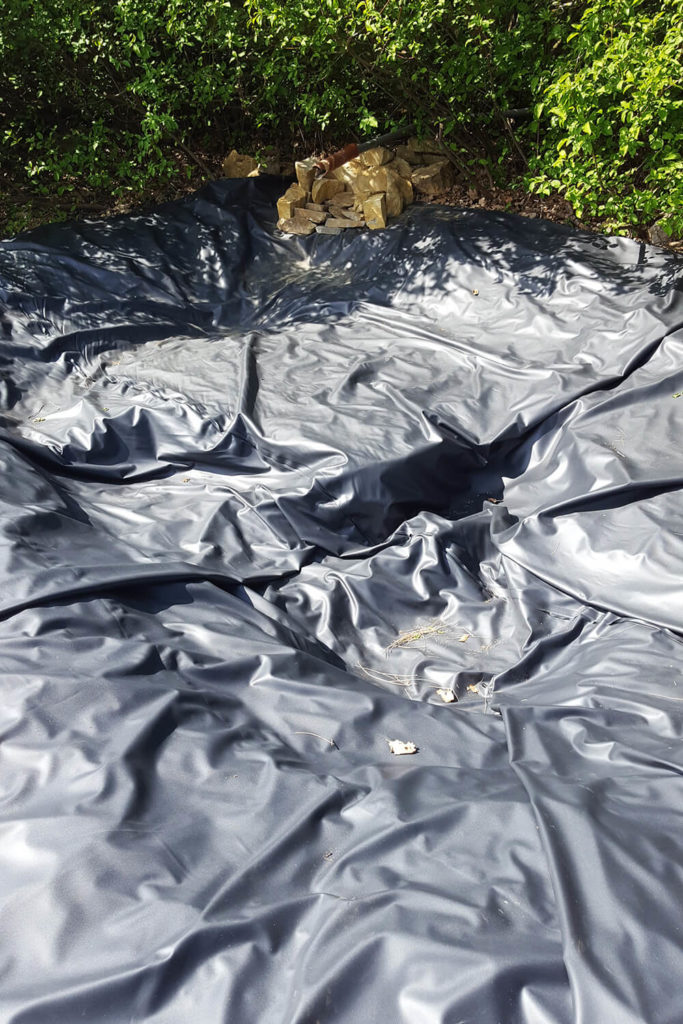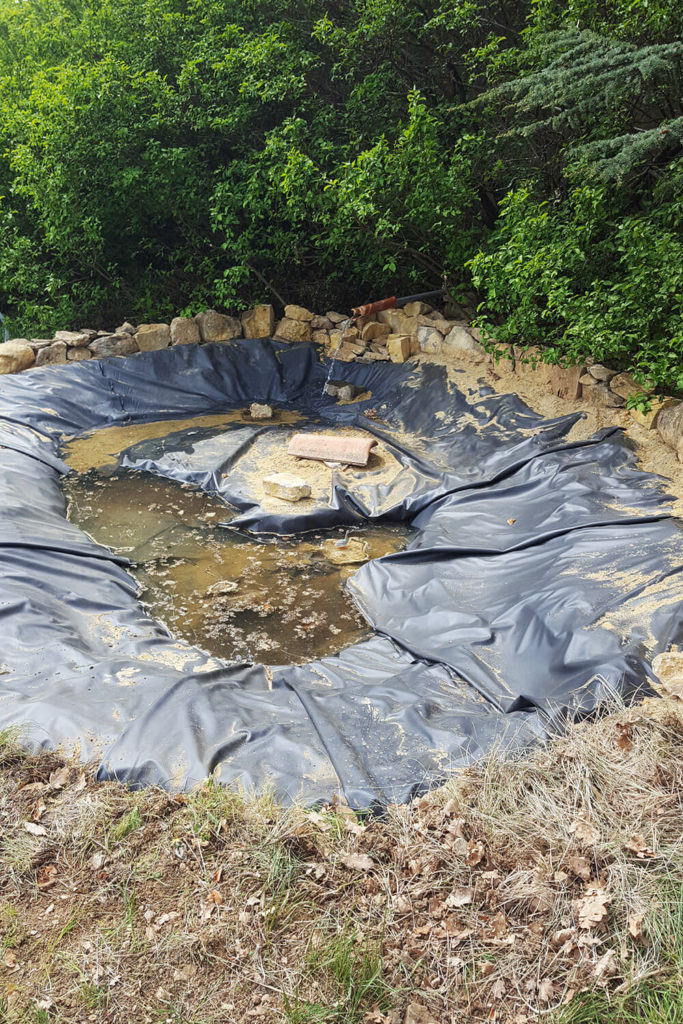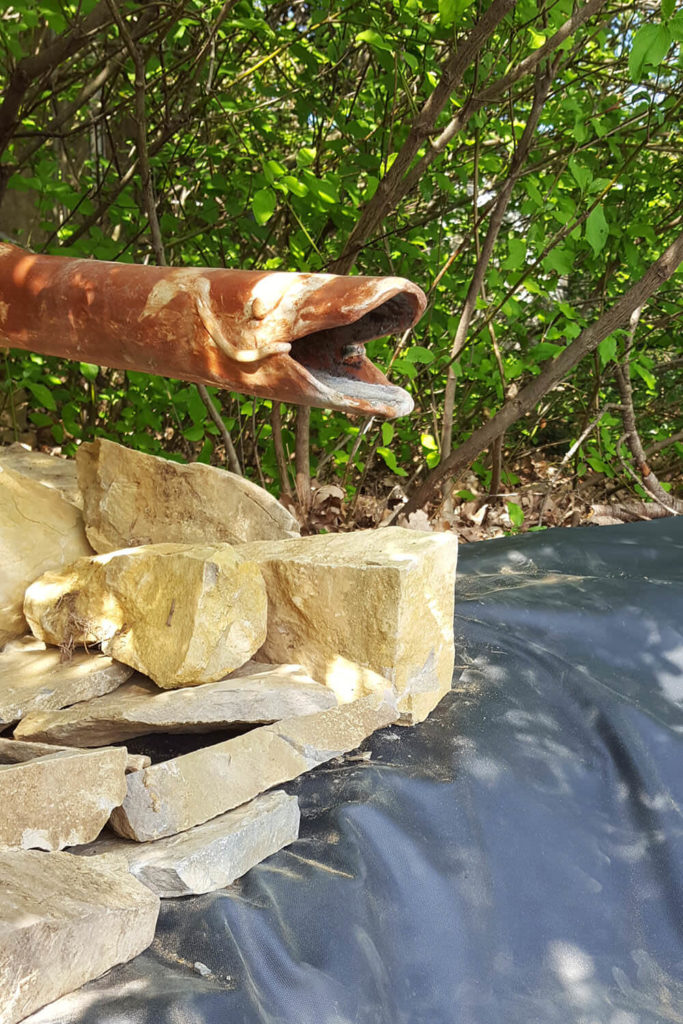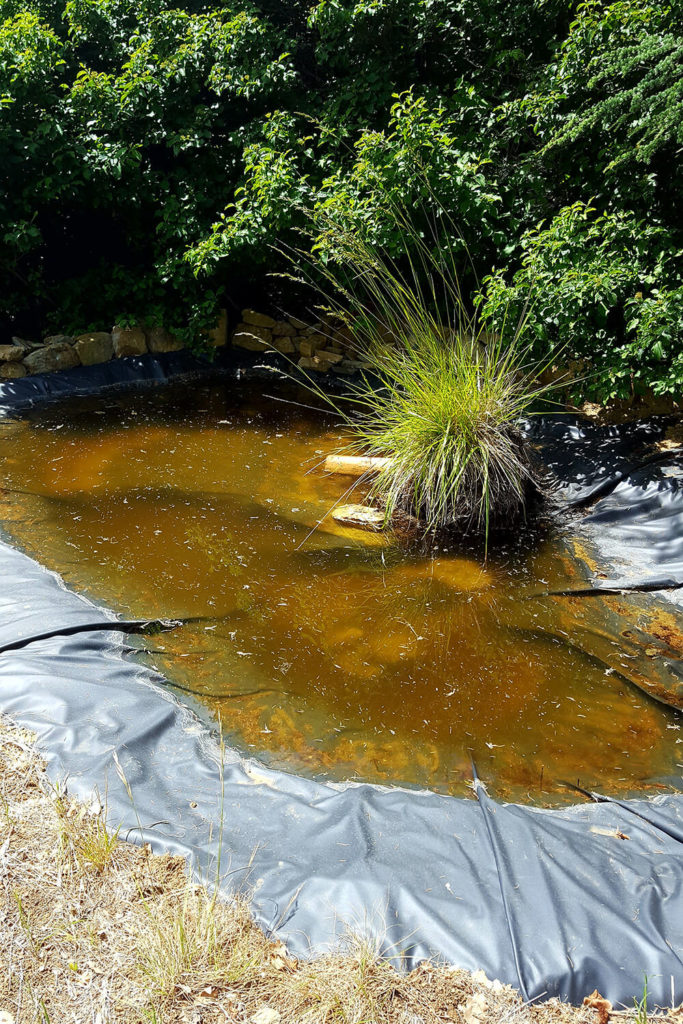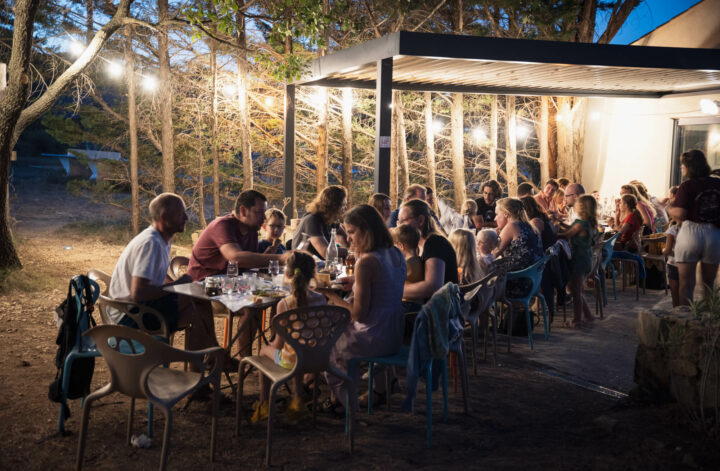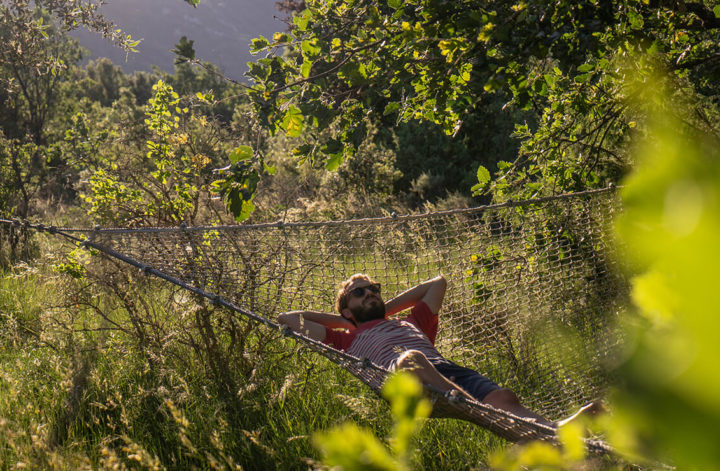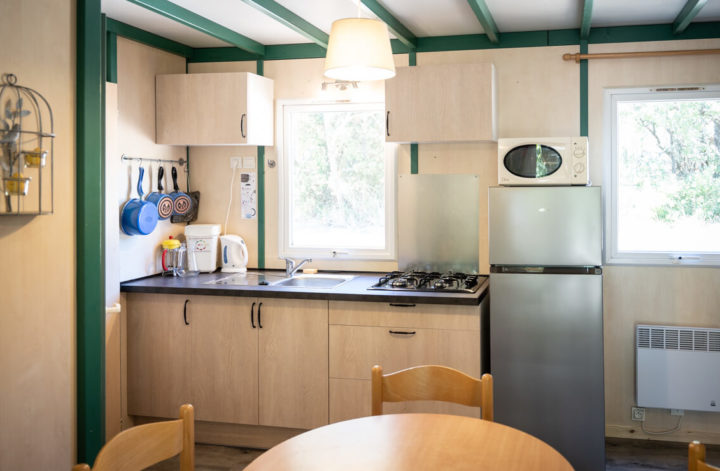A natural pond is home to a great deal of biodiversity. It is an exceptional refuge, all the more useful in our dry regions, where water is scarce. We had created a first one in 2016, unfortunately pierced by wild boars. Following our Refuge LPO label, we decided to enlarge it and put it back in water. Here is why and how to make a beautiful natural pond!
Why a natural pond at our place?
Come and live in nature is not just a slogan but a real principle for our campsite. We are of course a place of welcome for you, but also for biodiversity. We are part of the living world and as such we consider nature as our home. Furthermore, we do our best to conduct our business in a sustainable way, with the smallest possible footprint on the climate as well as on our direct environment. Here is an article abour our future plans.
So we dug a pond for its landscaping and educational role. It’s a lovely space that allows you to learn about the life of the pond, which is closely linked to the cycle of the seasons. And all this life can be useful for the vegetable garden.
What is it for?
Even a small pond is a real refuge for many animals and plants. Today, wetlands are becoming rare, especially in dry areas like ours. They are also sometimes polluted or filled in, making them an endangered area.
Yet this small, shallow body of water is a real place of life. It can host a fabulous ecosystem such as rushes, irises, cattails, dytics, notonectes, frogs, salamanders, newts, or dragonflies… not to mention the bats and birds that come to eat insects, drink and sometimes swim. A real wonder for young and old! We can’t wait to see what will come to populate it.
It is also used in our house to attract bees and wasps outside the pool.
5 steps to make a natural pond
So are you convinced that this is the right thing to do? If you have a garden, we’ll tell you how to attract wildlife naturally. Build your pond between March and September, so that plants and animals have time to settle in before winter.
- Find the right spot. Ideally sunny enough – but shaded between 12 and 4pm in summer – and not too close to trees – leaves could cause eutrophication of the water, i.e. depletion of oxygen in the water.
- Dig a hole. Allow for a surface area of at least 5 m2 and a depth of 80 cm in order to have a good inertia. The water will heat up less in summer and avoid freezing in winter. The shape is free, and a random outline will create a larger border, thus encouraging biodiversity. Finally, make the steps about 20 cm high and slope the edges gently to prevent animals from drowning.
- Drain the pond. There are several techniques for doing this: concreting, laying a tarpaulin or covering the bottom with clay. Here we chose the tarp. To prevent it from breaking through we put 5 cm of sand at the bottom (which you can also cover with a geotextile) and then a 1 mm thick EPDM tarp. For the dimensions, allow for the length of the pond + twice the depth + 1m (to let it extend 50cm on each side). Finally, put the soil (and stones) that you have extracted around the edges to hold the liner in place and beautify the surroundings.
- All you have to do is fill it in!
- Let it happen. Life will take care of itself! However, you can bring in some plants that you can collect from local wetlands (no fish or exotic plants!).
You too can stimulate biodiversity!
Whether you live in the city or the country, you can encourage biodiversity in your home! Here are a few tips to help you do just that. The full article (only in French) is here.
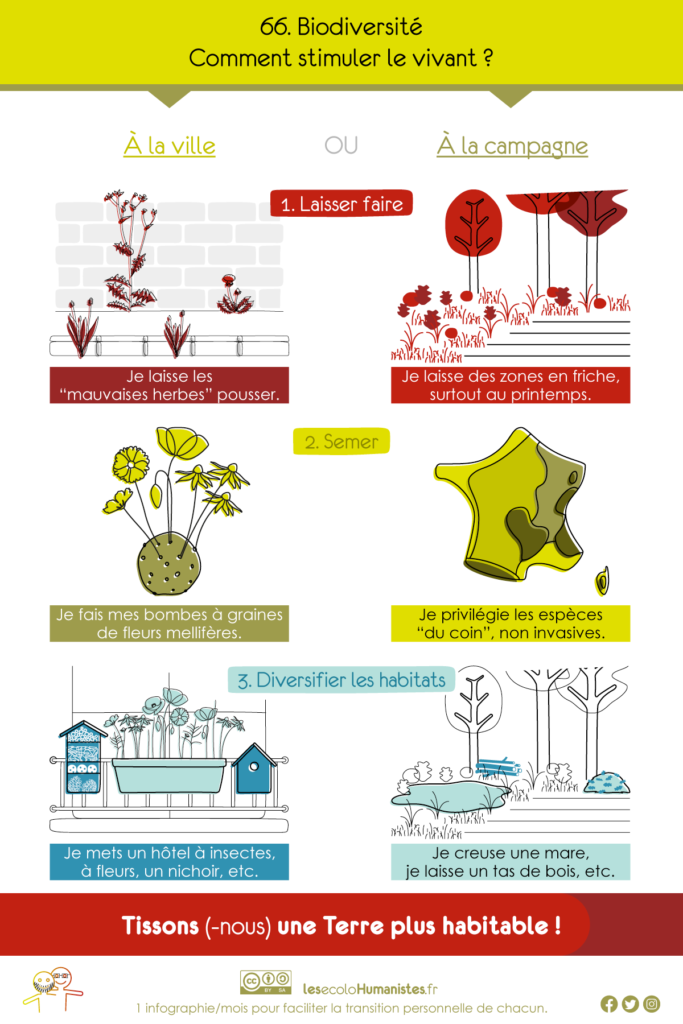
– Romain
